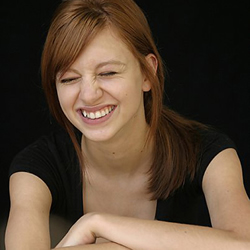More about Museum of Contemporary Art Australia
Works at Museum of Contemporary Art Australia

Sr. Editor
A chorus of “G’day Mate!” probably greets you at the entrance to the MCA, which holds the largest collection of contemporary art in the land down under.
That land it’s built on was originally home to the Gadigal people, a group of Aboriginal Australians. The building is actually located on the landing point of “The First Fleet,” the first eleven ships chock full of British criminals to get to Australia. As you might guess, the meeting didn’t go so well for the Aboriginals. The Gadigal clan consisted of 50-80 people in 1788, but the Brits with rap sheets came in, brought smallpox and bob’s your uncle, there were only 3 Cadigal people left in 1791.
But if you let the decimation of indigenous peoples by European disease dictate where not to go in Sydney (or plenty of other places, for that matter), you’d have to just stay home. And it’d be a shame to miss out on the wacky and wonderful collection at this museum. It’s all housed in a gorgeous Art Deco building on the harbor, and the artwork is provocative. A must-see for hip urbanites less interested in hiking the outback than catching the latest installation that uses lasers.
Featured Content
Here is what Wikipedia says about Museum of Contemporary Art Australia
The Museum of Contemporary Art Australia (MCA), formerly the Museum of Contemporary Art, Sydney, is located on George Street in The Rocks neighbourhood of Sydney. The museum is housed in the Stripped Classical/Art Deco-styled former Maritime Services Board (MSB) building on the western side of Circular Quay. A modern wing was added in 2012.
While the museum as an institution was established in 1991, its roots go back a half-century earlier. Expatriate Australian artist JW Power provided for a museum of contemporary art to be established in Sydney in his 1943 will, bequeathing both money and works from his collection to the University of Sydney, his alma mater. The works, along with others acquired with the money, were exhibited mainly as a travelling collection in the decades afterward, stored in two different university buildings. This collection was known as the Power Gallery of Contemporary Art.
When the MSB building became available the Museum of Contemporary Art, Sydney was established in 1991. It rapidly outgrew its space and ran into financial difficulties that were alleviated in the early 21st century under new director Elizabeth Ann Macgregor, who eliminated regular admission fees and diversified the museum's funding sources. After two proposed expansions failed, a design by local architect Sam Marshall met with sufficient approval to raise money for its construction. From 2010 the building underwent a major expansion and re-development, reopening in 2012 as the Museum of Contemporary Art Australia.
Power's original intent was for the museum to exhibit contemporary art from all over the world, with work by Australian artists shown only if it was relevant to the other works, but its focus has since changed primarily to Australian contemporary art. The museum's collection contains over 4,000 works by Australian artists acquired since 1989. They span all art forms with strong holdings in painting, photography, sculpture, works on paper, and moving images, as well as significant representation of works by Aboriginal and Torres Strait Islander artists. The museum runs programs to engage the interest of youth and disabled communities in appreciating and making art.
Check out the full Wikipedia article about Museum of Contemporary Art Australia












